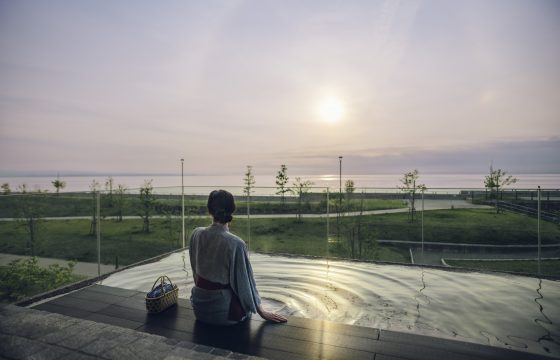A paradise trip to enjoy a variety of hot springs and "hell gourmet" only available in hot spring kingdom of Beppu
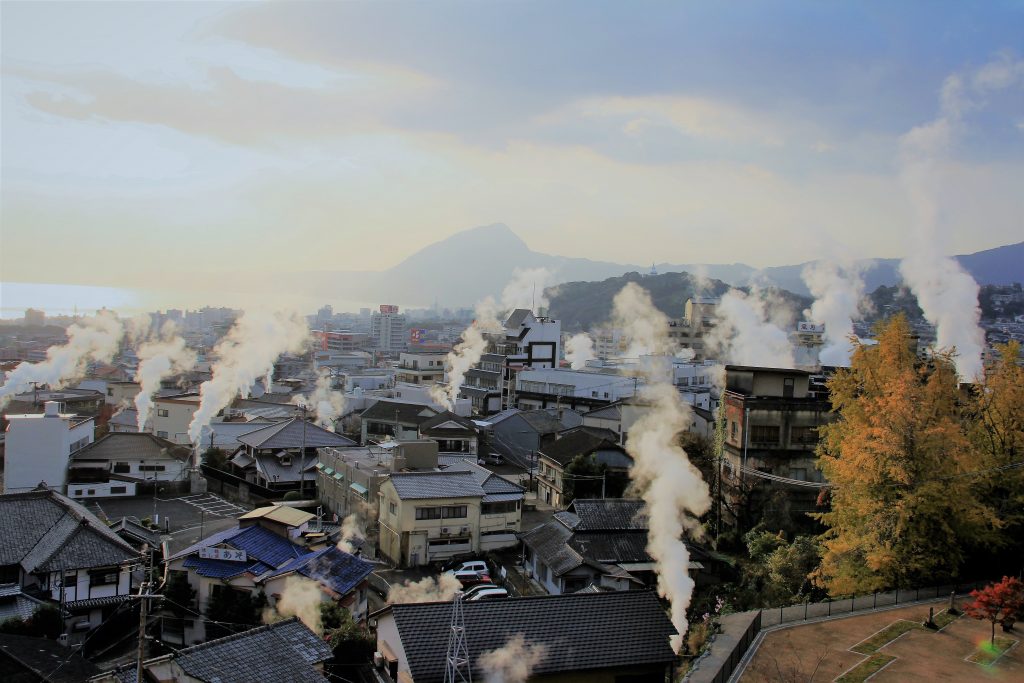
Beppu, Oita Prefecture, is a city of hot springs with more than 2,800 springs and plumes of steam rising from everywhere. With a wide variety of spring qualities and an overwhelming amount of hot springs that boasts of being the largest in Japan, Beppu is known among hot spring connoisseurs as a place to be admired. The eight districts hot spring scattered around the city are called "Beppu Hatto (eight hot springs)," and each is characterized by its own unique spring quality and city atmosphere. A culture of ingenious thermal baths has also developed, allowing visitors to experience the long-cultivated history of the city while also discovering new hot spring attractions. In between trips, be sure to try the casual gourmet food prepared with the power of "hell," where high-temperature steam and boiling water gush out. You can fully enjoy with your eyes, skin, aroma, and taste. hot spring We will introduce you to the profound charms of the heavenly city of Beppu.
The number of hot springs and total amount of hot spring water is overwhelmingly No. 1. A detailed analysis of the greatness of "Beppu"

Beppu has over 2,800 hot springs, with a flow rate of over 102,000 liters per minute (*). Both figures are the best in Japan. By the way, if we look at Yufuin hot spring in Oita Prefecture, which is ranked second in the country, we can see that Beppu is far ahead, with about 1,000 hot springs and a flow rate of about 52,000 liters. What's even more amazing is that out of the 10 types of "poster spring quality" such as simple hot spring, chloride springs, and sulfur springs, seven types can be enjoyed in Beppu hot spring. There is no other hot spring resort with such a rich variety in both quality and quantity, so it's no wonder that Beppu hot spring is praised as "the best in Japan."
*From the "2021 hot spring Usage Report (Summary Table)" (Oita Prefecture website hot spring Data)
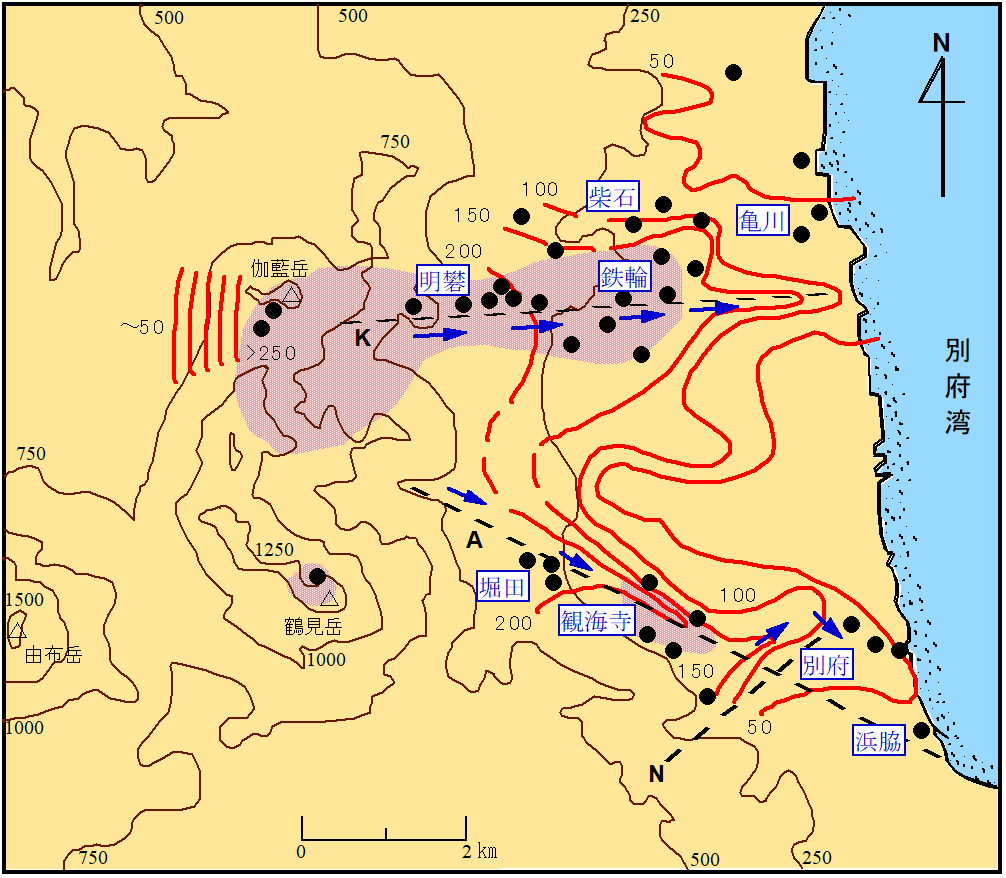
But why does Beppu hot spring have seven different types of spring water? To find out the secret, let's first look at the geological characteristics.
Beppu is located in the "Beppu-Mannenyama Fault Zone," where many active faults are distributed, and the alluvial fan spreads from Mount Tsurumi and Mount Garan in the west of the city to Beppu Bay in the east. It was formed of rocks from pyroclastic flows and debris flows caused by the ancient volcanic activity of Mount Tsurumi. Of particular note are the existence of two faults that run north and south of the alluvial fan from Mount Tsurumi as the base point. These faults are underground passages for hot water, and many of the ancient "Hells" (fumaroles and boiling springs) and recent excavated springs can be found around these two faults. Kamekawa, Shibaishi, Kannawa, and Myoban are located along the Kannawa Fault in the north, and Hamawaki, Beppu, Kankaiji, and Hotta are located along the Asamigawa Fault in the south, and the "Eight Hot Springs of Beppu" are also located along the faults.
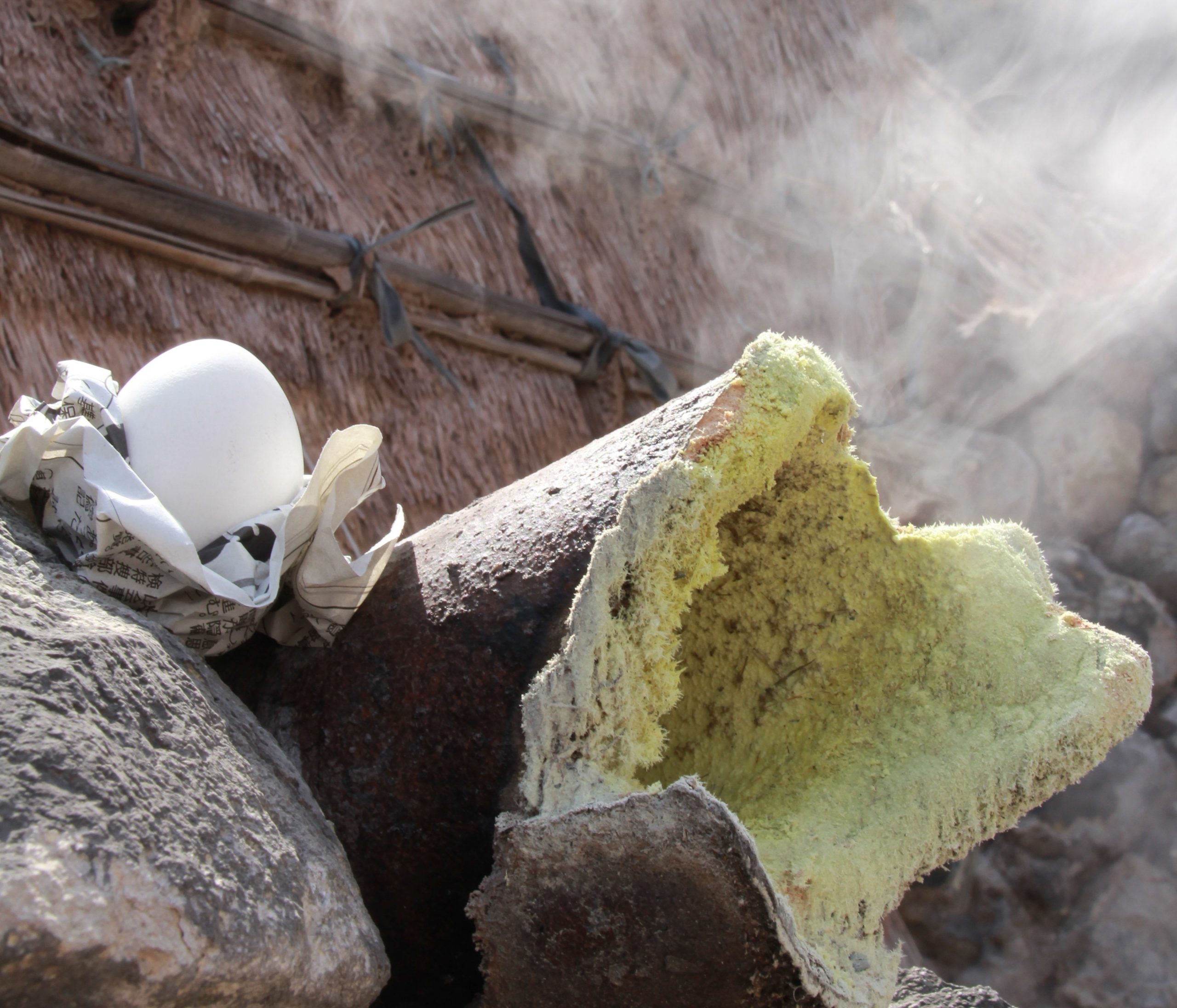
The source of the hot water flowing through the fault is said to be chloride spring hot water located underground in the Tsurumi volcano group. It is thought that the various spring qualities are produced when rainwater seeping in from the surface mixes with the hot water, boils due to underground heat, condenses steam, and reacts chemically with the various rocks deposited in the alluvial fan.
The water also comes in a variety of different forms, with "fumaroles" spewing out high-temperature steam from the mountains to the sea, "boiling springs" where hot water boils and spews out with steam, and "regular hot spring" where the water is extracted at a temperature lower than the boiling point. These diverse forms of water have given Beppu a rich hot spring culture that goes beyond just "soaking in hot water."
A tour of the eight hot springs of Beppu, each with a different atmosphere and spring quality
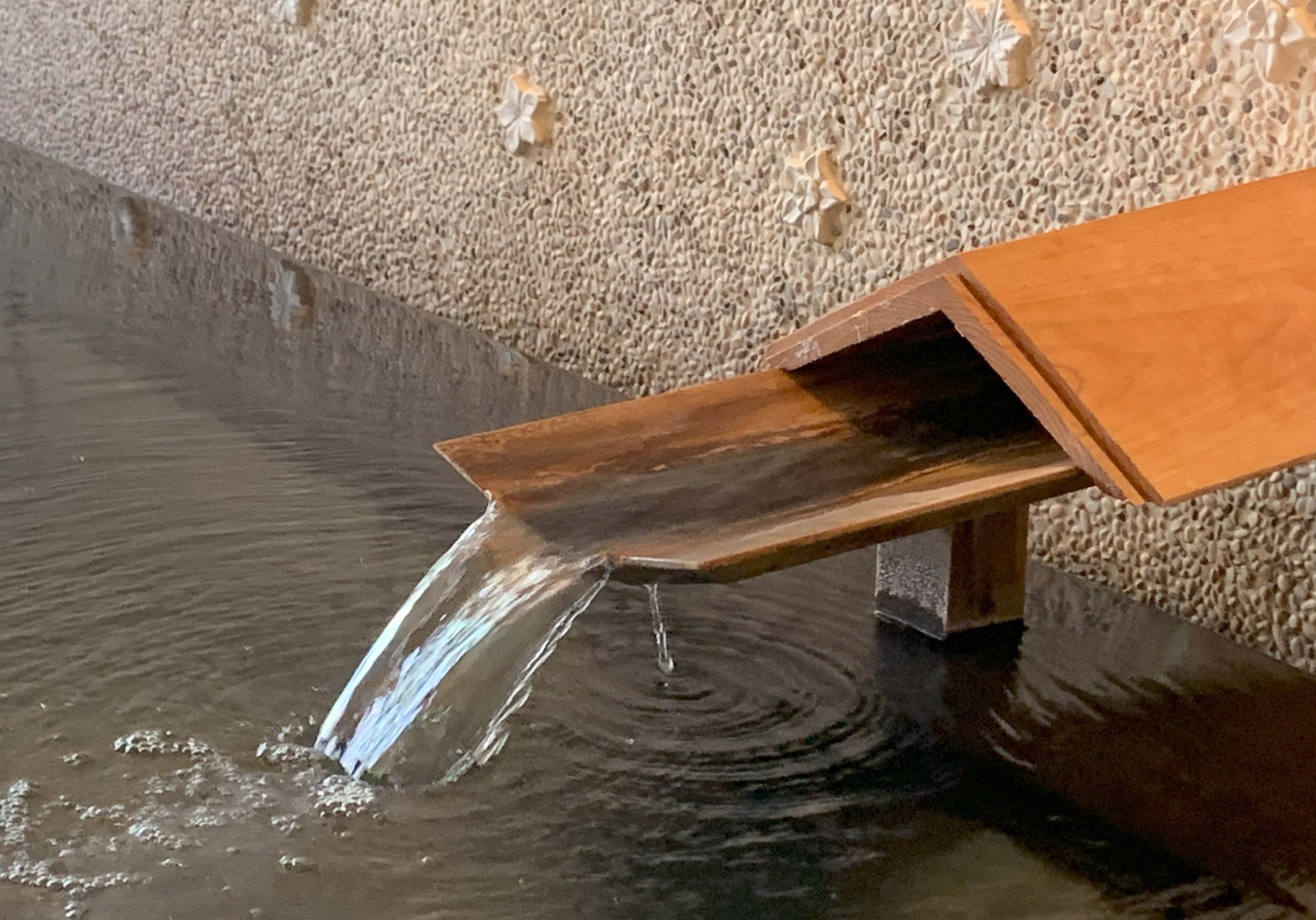
Beppu's hot springs were discovered long ago, and are described in the "Iyo no Kuni Fudoki," written around the 8th century. For a long time, hot hot spring flourished as independent hot spring springs in scattered villages and towns, but after the Meiji period, transportation developed and towns merged, and by 1924, eight representative hot spring areas had come to be collectively known as the "Beppu Hatto." Here we will introduce the characteristics and charms of these eight unique hot spring springs.
◆ Hamawaki hot spring <Examples of spring quality: simple hot spring, bicarbonate spring>
Along with Kannawa, this hot hot spring area is said to be the birthplace of Beppu hot spring. Located on the south side of Beppu hot spring along the coast, it is said that the name "Hamawaki" came from hot spring bubbling up from the beach. During the Edo period, it was a bustling port town, and there are still remnants of the entertainment district from the Meiji to Taisho periods. Today, old-fashioned public baths are dotted around the area downstream from the beach and Asami River, where you can enjoy interacting with the locals. The city-run multi-purpose hot spring resort "Yuto Pia Hamawaki" also has a rest room, so you can relax and enjoy your stay.
◆Beppu hot spring <Examples of spring quality: simple hot spring, chloride spring, bicarbonate spring>
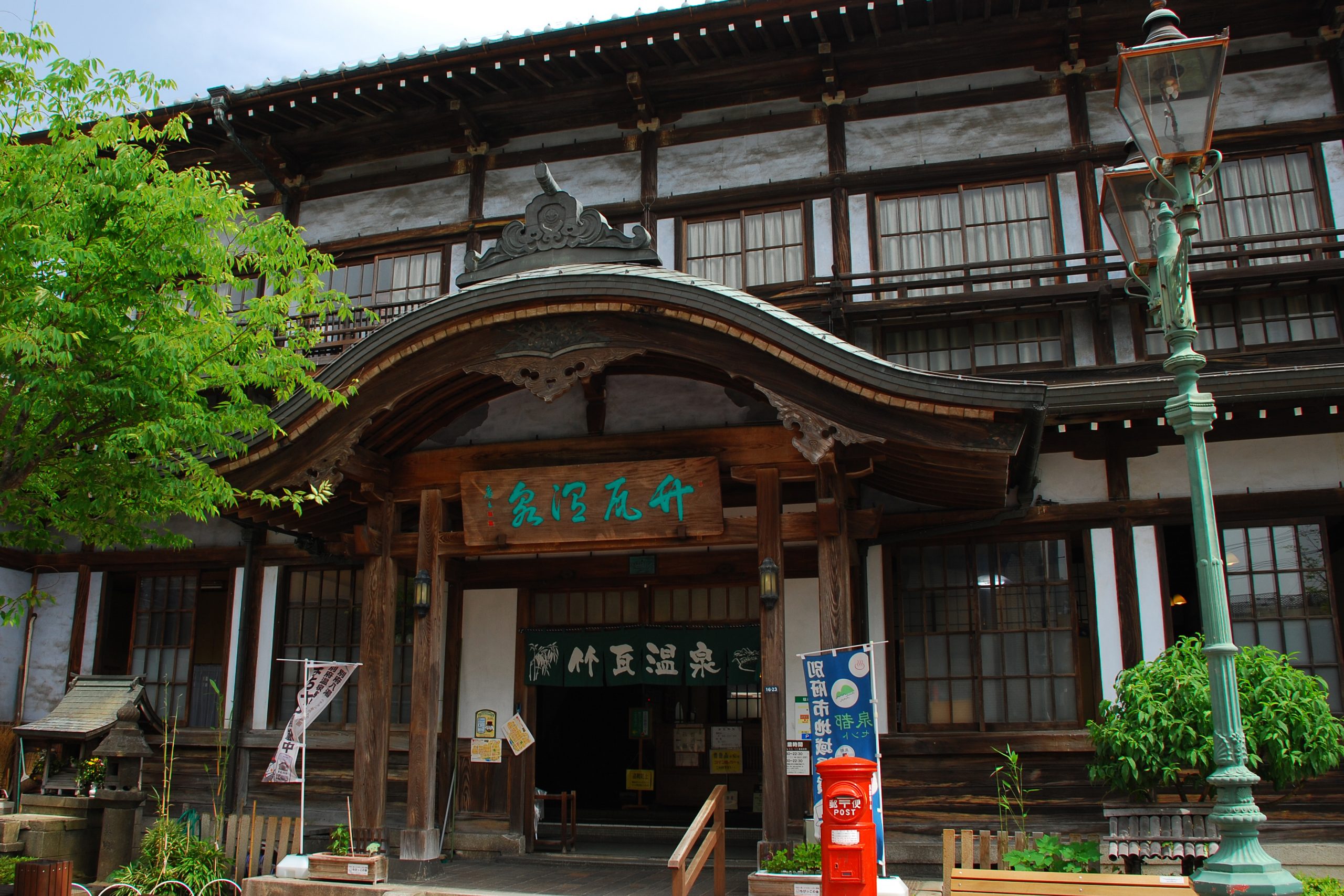
The gateway to Beppu hot spring, the area is easily Direction, with JR Beppu Station at its center. This hot hot spring area is one of the representative hot springs of the "Eight Hot Springs of Beppu," and the town's symbol, Takegawara hot spring, is a must-see. The rounded, karahafu-style roof is full of nostalgia and is a great spot for taking commemorative photos. Inside, you'll find the famous sand bath and baths with different spring water qualities for men and women, making for a memorable bathing Experience. There is also a wide variety of other Property, from public baths that cost less than 500 yen to drop-in baths at luxury inns.
◆ Kankaiji hot spring <Examples of spring quality: simple hot spring, chloride spring>
This area has been developed as a hot spring resort since the Kamakura period. Located upstream of the Asami River, at an altitude of about 200m, it is characterized by its excellent views that overlook Beppu city, Beppu Bay, and even Shikoku on clear days. There are public baths where you can enjoy the soft, colorless, transparent hot spring, and a drop-in bath with Outdoor hot spring with a rare cobalt blue water color. It is also close to famous cable cars and waterfalls, so it is recommended to combine a visit with sightseeing.
◆Hotta hot spring <Examples of spring quality: simple hot spring, bicarbonate spring, sulfur spring>
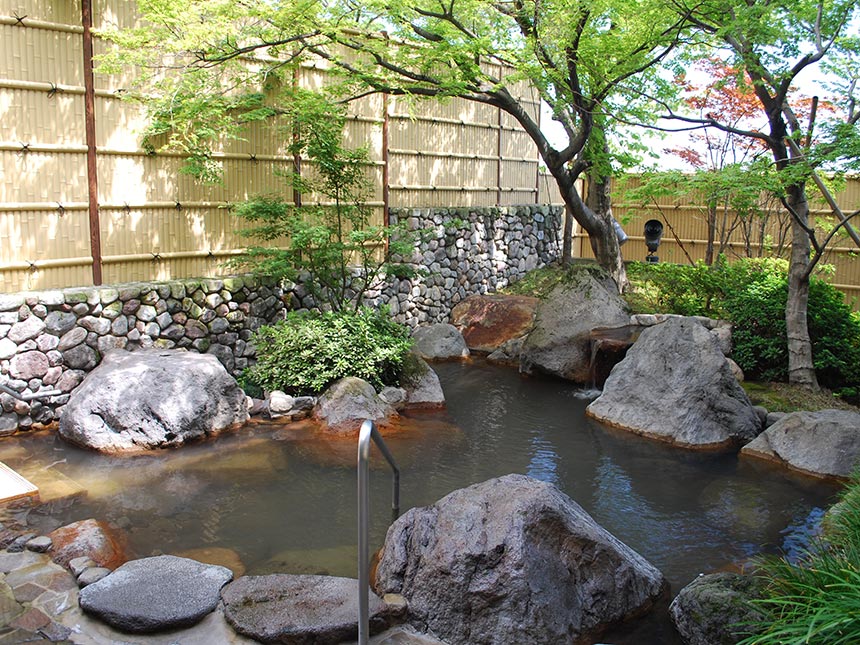
It is just off the Higashikyushu Expressway Beppu IC. From Kankaiji Temple hot spring, it is located a little uphill towards Mt. Tsurumi. Fumaroles rise between idyllic fields and mountainous scenery, and it is blessed with abundant gushing volumes. It has flourished as a hot spring resort since the Edo period, and has a history of warmly healing travelers traveling to and from Yufuin and Hita hot spring area. Crowded with locals and tourists alike on weekends, the municipal hot spring Property offers an open-air rock bath with fluffy floating hot spring flowers.
◆Kamegawa hot spring <Examples of spring quality: simple hot spring, chloride spring>
A little way from downtown Beppu, around JR Kamekawa Station on the northern coast. During the Edo period, it was a key transportation point to Kokura, and hot spring and sand baths that well up on the coast were popular with travelers. The area is famous for Kiyosen, hot spring that was buried in a disaster in the Middle Ages and was restored in the Meiji period and has been rebuilt several times. There is also a retro Beppu-style public bath with a bathtub located semi-underground and no partition between it and the changing room, which is secretly popular among hot spring fans.
◆Kannawa hot spring <Examples of spring quality: simple hot spring, chloride spring, sulfate spring, sulfur spring>
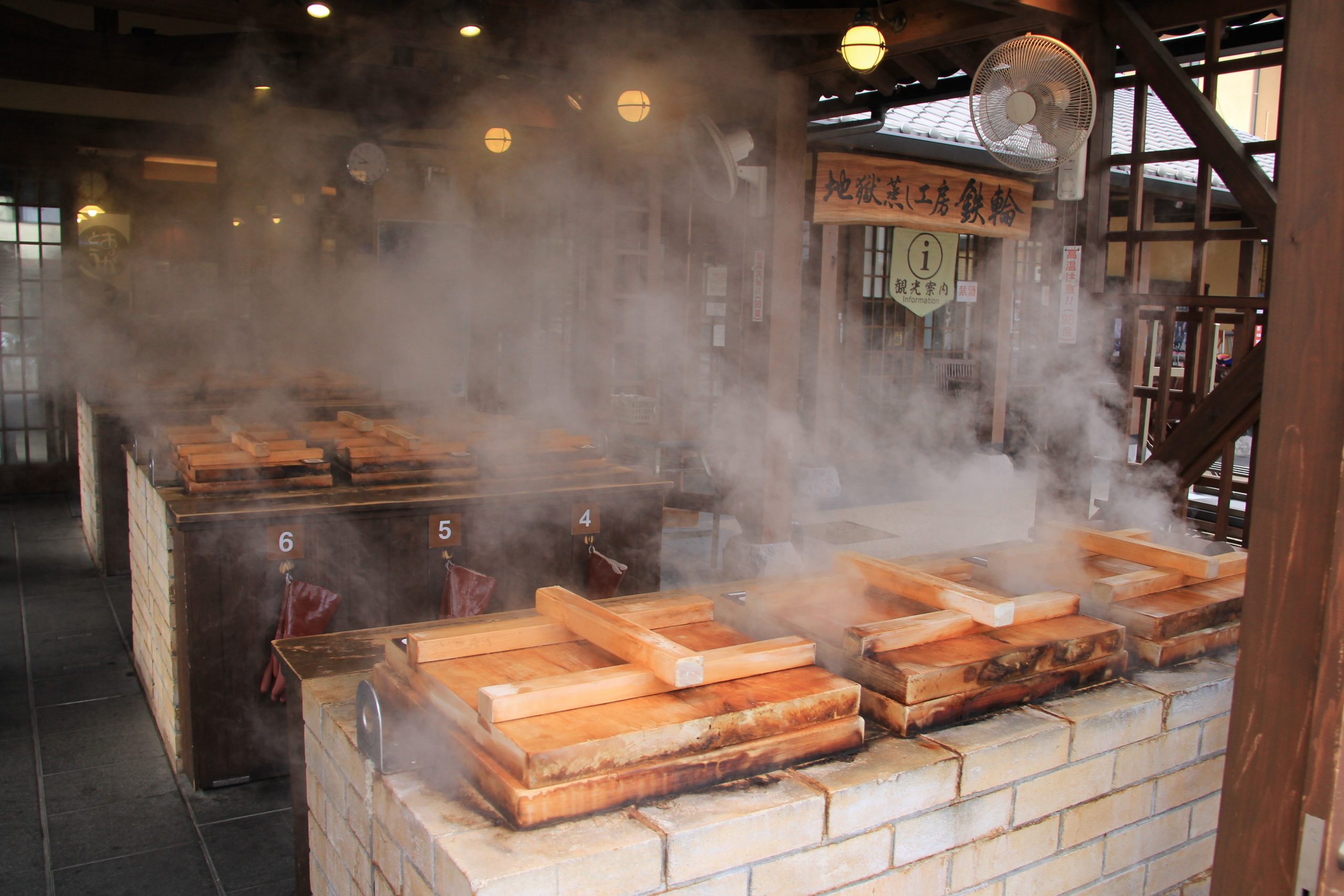
Among the "Beppu Eight Hot Springs," this area is especially filled with hot spring atmosphere and has a rich thermal culture. Many tourists can be seen enjoying a stroll, attracted by the sight of steam rising from alleys here and there. It is said that the monk Ippen Shonin calmed the hell (fumes and boiling springs) known as "Kuberi Yunoi" during the Kamakura period, and created hot hot spring resorts such as "Mushi-yu" and "Shibu-no-yu," which are still beloved today. There are also many restaurants where you can Experience the taste of "Hell Steam," which uses fume and geothermal heat in cooking.
◆ Shibaseki hot spring <Examples of spring quality: simple hot spring, chloride spring, iron-containing spring, acidic spring>
It is said that the name comes from the discovery of fossils of Shiba in the Edo period. It is a venerable hot spring where Emperor Daigo recuperated in 895 (Kanpei 7) and Emperor Goreizumi recuperated in 1044 (Kantoku 1). The municipal hot spring that stands along the mountain stream is a style typical of Beppu, divided into "hot spring" and "ordinary hot spring". You can visit the hot spring with strong personalities, such as the "Chosenji Yakushi Bath" where you can enjoy an acidic spring drawn from Ryumaki Hell, and the foot bath attached to the "Blood Pond Hell" that contains iron oxide and magnesium oxide and looks red.
◆Alum hot spring <Examples of spring quality: simple hot spring, iron-containing springs, sulfur springs, acidic springs>
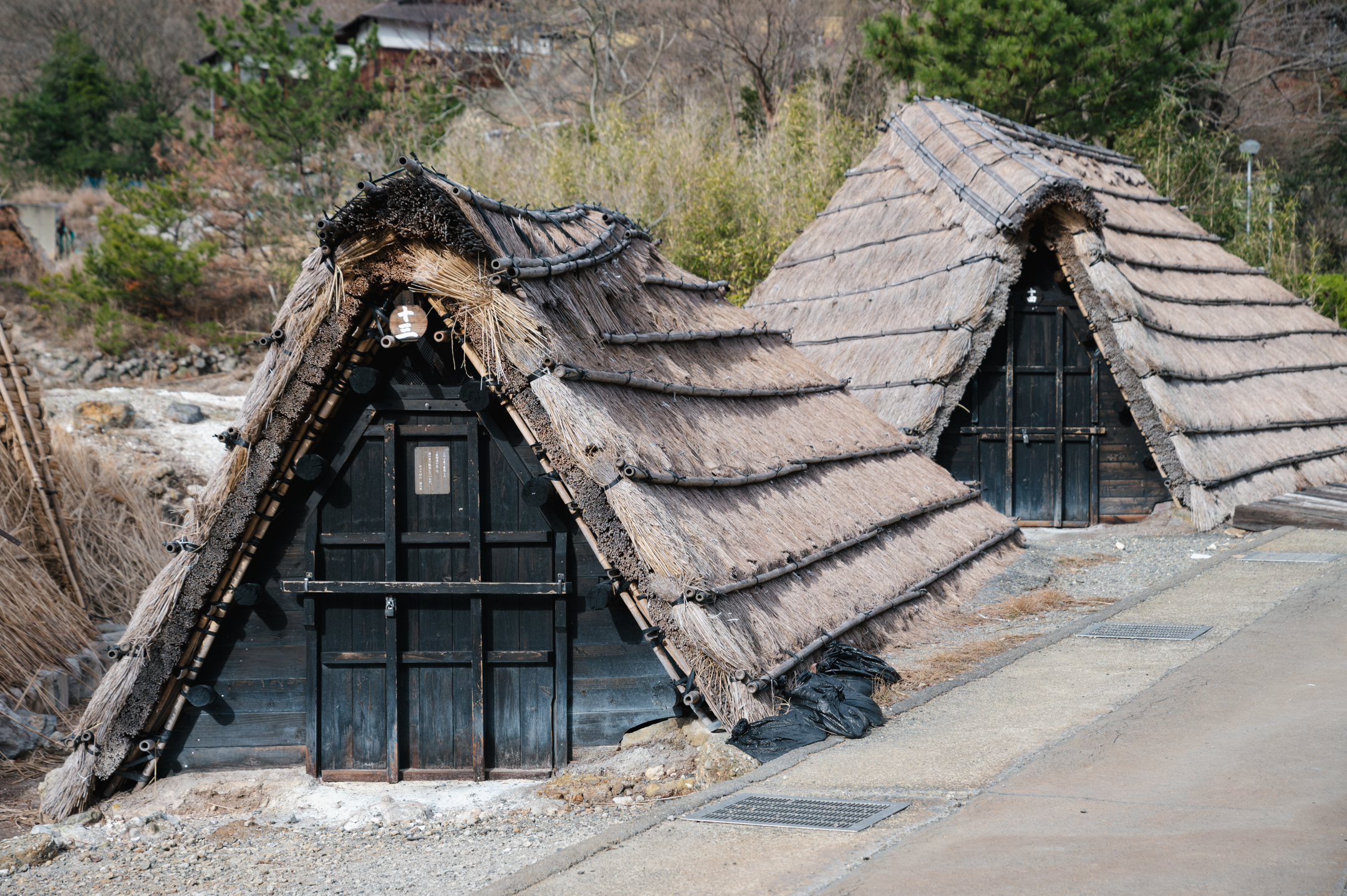
It is the highest altitude in Beppu Hachiyu and is located in the middle of Mt. Garan (also known as Mt. Sulphur). In the Edo period, it is an area that became famous for collecting flowers of aketsu and yu. There is also a Property where you can still see the production of hot spring flowers, which is designated as an Important Intangible Folk Cultural Property, and still retains the quaint scenery where the thatched "Yunohana huts" are still standing. It is a hot spring place where you can encounter cloudy sulfur springs, milky blue acid springs, and unique muddy baths, which have an hot spring impressive appearance and scent.
Beppu has more than just hot springs!
Enjoy the energy of the earth in every way possible
In addition to the wide variety of hot springs and spring qualities, another big attraction of hot spring paradise Beppu is the unusual way to enjoy its hot hot spring power. Meiji-born poet Noguchi Ujo praised the steam baths, saying, "Returning from the Bungo Kannawa steam baths, the scent of acorus gramineus lingers on my skin." We will introduce you to some of the thermal Experience that have long been popular in Beppu, using high-temperature steam and geothermal energy.
◆ "Steamed stone licorice root" at "Tetsuwana Steam Bath"
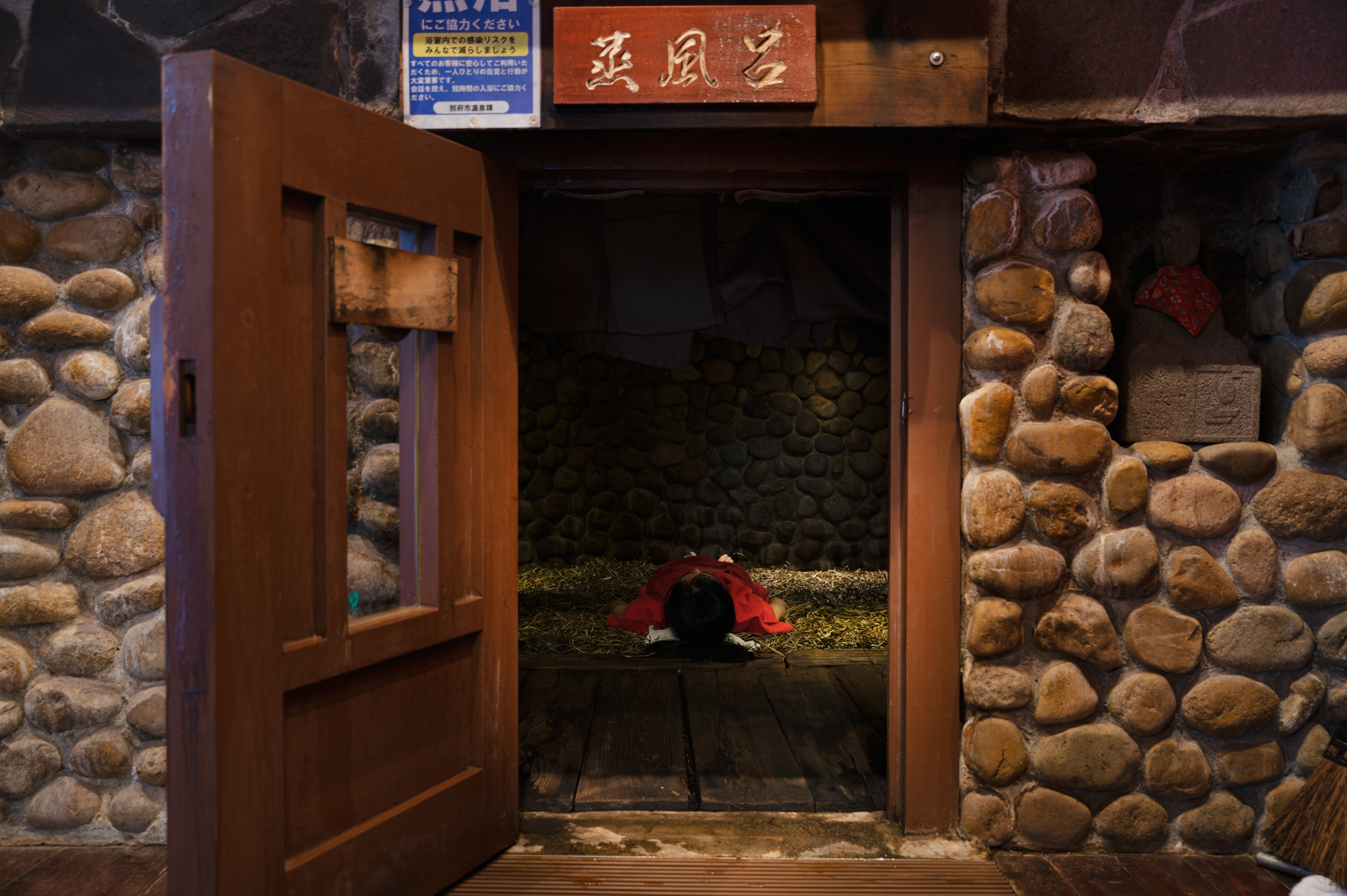
This steam bath is said to have been opened by the monk Ippen Shonin during the Kamakura period. It is a unique style of bathing where you enter a stone chamber of about 8 tatami mats and lie down on the medicinal herbs spread on the floor. The medicinal herbs are a type of iris called sekisho that only grow in clusters along clear streams. The refreshing scent and steam that fills the space will soothe your body and mind, allowing you Experience the ancient Japanese herbal bath. Bring comfortable clothing when you enter, or rent clothes. Leave the room after about 8 to 10 minutes, take a break, and then take a refreshing bath in the bathtub to feel like you are in heaven.
There is also a casual "foot steaming" facility on the premises.
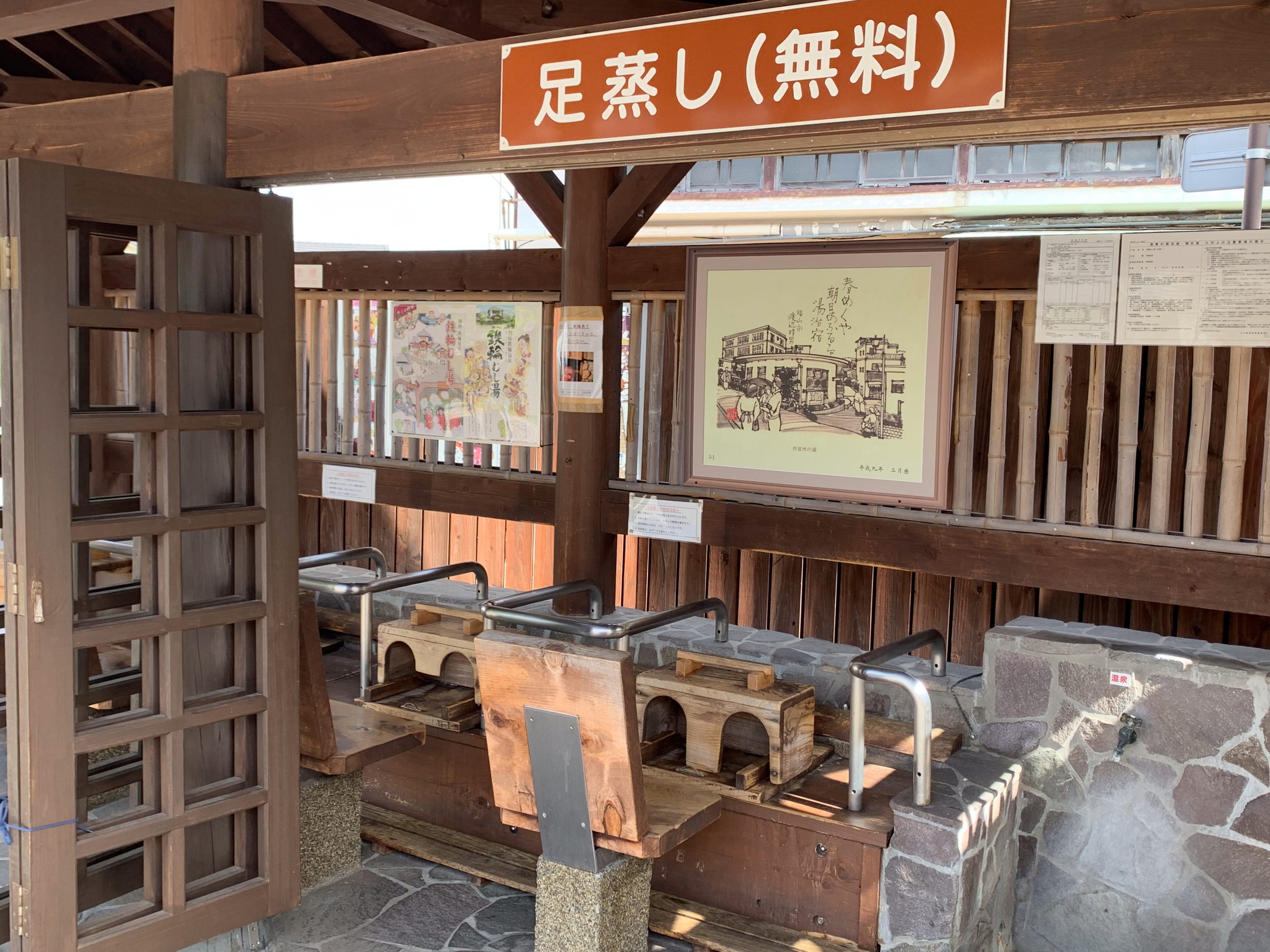
Near the entrance to Kannawa Steam Bath, you can enjoy a free foot bath where you can warm your feet with steam. Open the lid in front of the chair and place your legs below the knees in the steam, and your whole body will warm up in no time, and you will feel so hot that you will start to sweat. This rare Experience that can only be found in Beppu is always bustling with tourists from Japan and abroad. Why not give it a try while you're out walking around, with the same casual feeling as a foot bath?
- Iron ring steam bath
-
 https://www.city.beppu.oita.jp/sisetu/shieionsen/detail11.html
https://www.city.beppu.oita.jp/sisetu/shieionsen/detail11.html Beppu City Kannawakami 1 Group MAP
Beppu City Kannawakami 1 Group MAP
 7:30-19:30 (last entry 19:00)
7:30-19:30 (last entry 19:00) The fourth Thursday of every month (or the following day if that Thursday is a public holiday)
The fourth Thursday of every month (or the following day if that Thursday is a public holiday) Steam bath: 700 yen (for junior high school students and above) Rental yukata: 220 yen Foot steaming is free
Steam bath: 700 yen (for junior high school students and above) Rental yukata: 220 yen Foot steaming is free 0977-67-3880
0977-67-3880 Free Parking is available at the municipal hot hot spring "Netsu no Yu"
Free Parking is available at the municipal hot hot spring "Netsu no Yu" "Foot steaming" may not be available depending on the steam conditions.
"Foot steaming" may not be available depending on the steam conditions.
◆ "Sand bath" at "Takegawara hot spring"
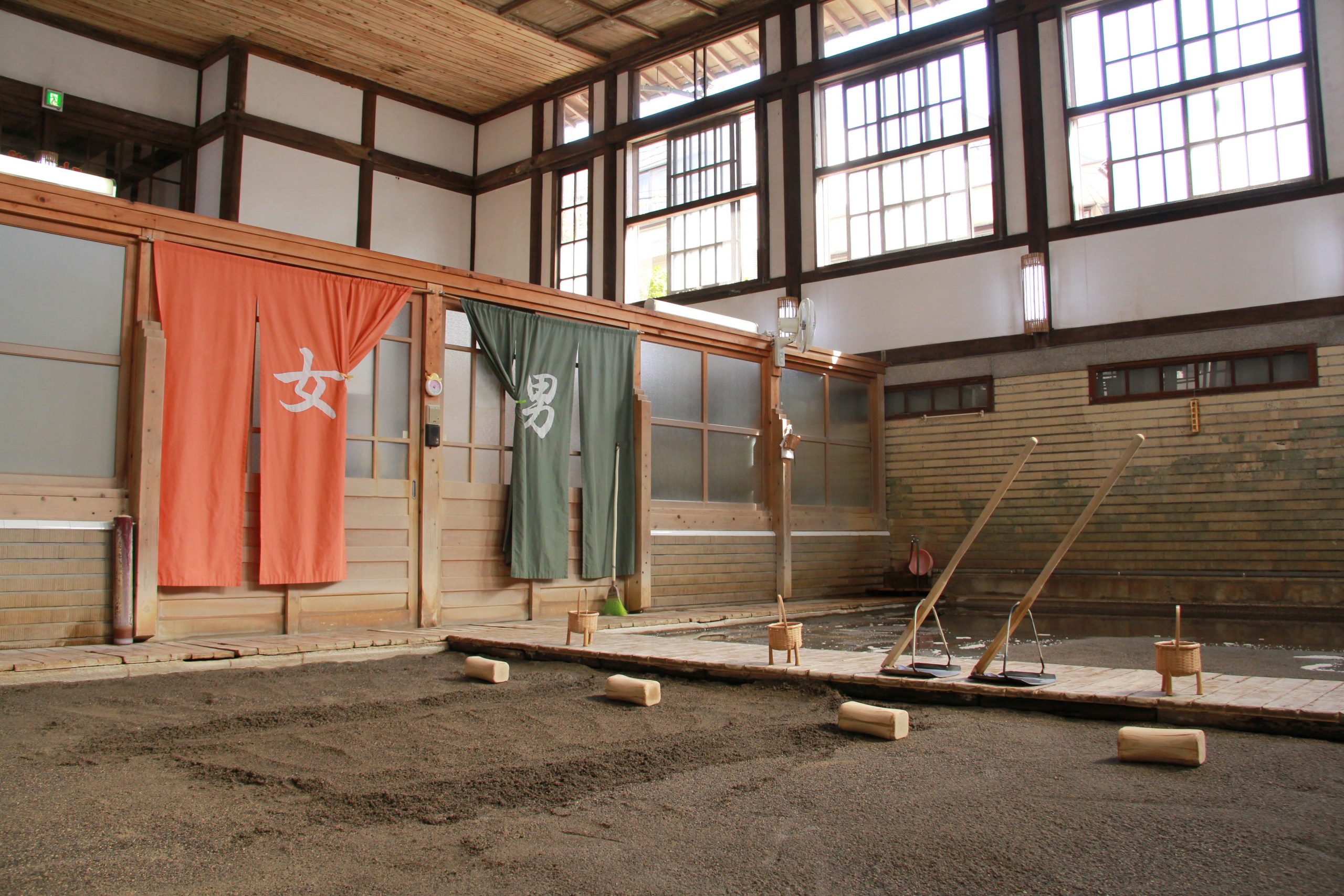
Located about an 8-minute walk from Beppu Station, this building is a symbol of Beppu hot spring. The famous "Sand Bath" involves changing into a yukata that you borrow at the entrance, lying down on the sand, and having sand poured over you. The sand warmed by hot spring is at just the right temperature, moist and heavy, inviting you to an indescribable sense of comfort. After your 10-minute sand bath Experience, you can rinse off the sand in the shower and finish by re-entering hot spring. As it is an indoor facility, it is an easy spot to stop by on rainy days or in winter. In addition to the sand bath, there are also separate hot spring for men and women within the building.
- Takegawara hot spring
-
 https://www.city.beppu.oita.jp/sisetu/shieionsen/detail4.html
https://www.city.beppu.oita.jp/sisetu/shieionsen/detail4.html 16-23 Motomachi, Beppu City MAP
16-23 Motomachi, Beppu City MAP
 Sand bath: 8:00-22:30 (last admission: 21:30) Regular bath: 6:30-22:30
Sand bath: 8:00-22:30 (last admission: 21:30) Regular bath: 6:30-22:30 The third Wednesday of every month (or the following day if that Wednesday is a public holiday)
The third Wednesday of every month (or the following day if that Wednesday is a public holiday) Sand bath: 1,500 yen (including regular bath) Regular bath only: 300 yen
Sand bath: 1,500 yen (including regular bath) Regular bath only: 300 yen 0977-23-1585
0977-23-1585 none
none Sand bath is available for ages 6 and over
Sand bath is available for ages 6 and over
When it gets busy, reception numbers will be distributed, so it is recommended that you visit with plenty of time.
◆ "Yume Tamatebako" "Box Steamed"

This day-trip bathing Property is located in the Kannawa area. As part of the various hot baths, a "box steamer" has been installed next to the open-Outdoor hot spring. The "box steamer" is a Japanese-style sauna that has been passed down since ancient times in Kannawa/Myoban hot spring. Each person opens the cypress box, sits on a chair inside, and closes the lid so that only the head above the neck is exposed from the box. It has all the benefits: you warm up thoroughly with the steam that fills the air from your feet, your head is outside so you don't feel short of breath, and there's no need to worry about your hair being damaged by the heat. The open-minded "solo sauna" is so comfortable you'll get addicted to it.
- Dream Box
-
 https://yukai-r.jp/fugetsu/service/
https://yukai-r.jp/fugetsu/service/ Beppu City Kita Junior High School 1st Class MAP
Beppu City Kita Junior High School 1st Class MAP
 7:00 to 2:00 the next morning
7:00 to 2:00 the next morning Open daily
Open daily Adults: 580 yen, elementary school students: 290 yen (extra fee on Saturdays, Sundays, holidays and peak days)
Adults: 580 yen, elementary school students: 290 yen (extra fee on Saturdays, Sundays, holidays and peak days) 0570-200-445
0570-200-445 free
free
◆ "Hand bath" in the square in front of Beppu Station
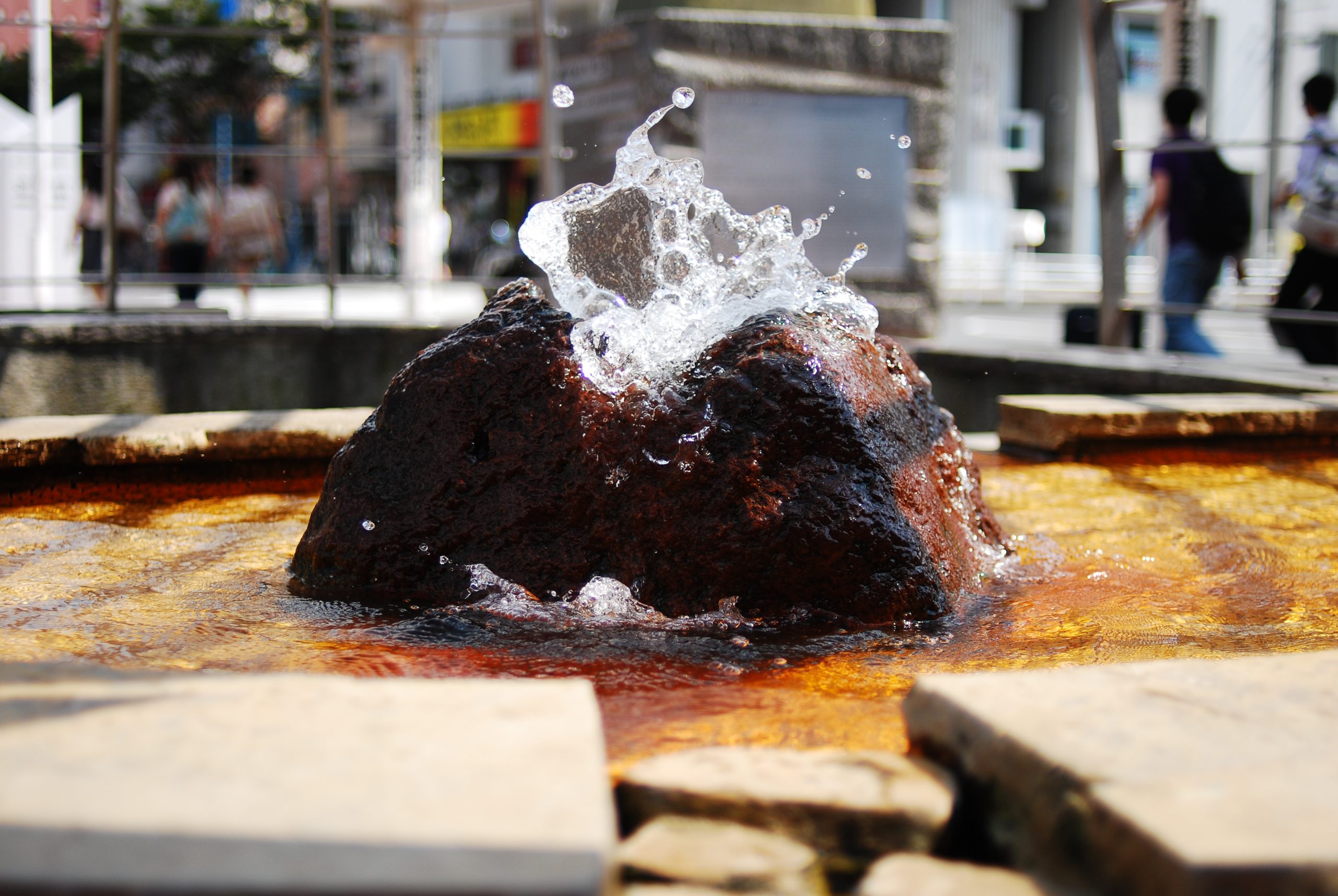
Inside the monument in the square in front of JR Beppu Station. Free-flowing hot spring water overflows from a base made of Beppu stone, which is native to Beppu. The spring quality is sodium chloride sulfate spring. If you soak your hands in it for a while, your whole body will warm up and you will feel refreshed. The colorful monument is made of bamboo and was created to represent the abundant hot spring that gush out from various places in the city.
- Hand bath at the Beppu Station Square
-
 12-13 Ekimae-cho, Beppu City, Oita Prefecture MAP
12-13 Ekimae-cho, Beppu City, Oita Prefecture MAP
Perfect as a snack after a bath or sightseeing.
Enjoy the delicious steamed food
After enjoying the baths and steam baths, you'll want to take a leisurely stroll. All around town, you'll find specialty snacks made with "Hell Steaming," a method that uses the steam and heat that is so characteristic of Beppu. Here are some popular delicacies to cool down your hot body while munching on.
◆ "Hell Steamed Pudding" from "Myoban hot spring Okamotoya Shop"
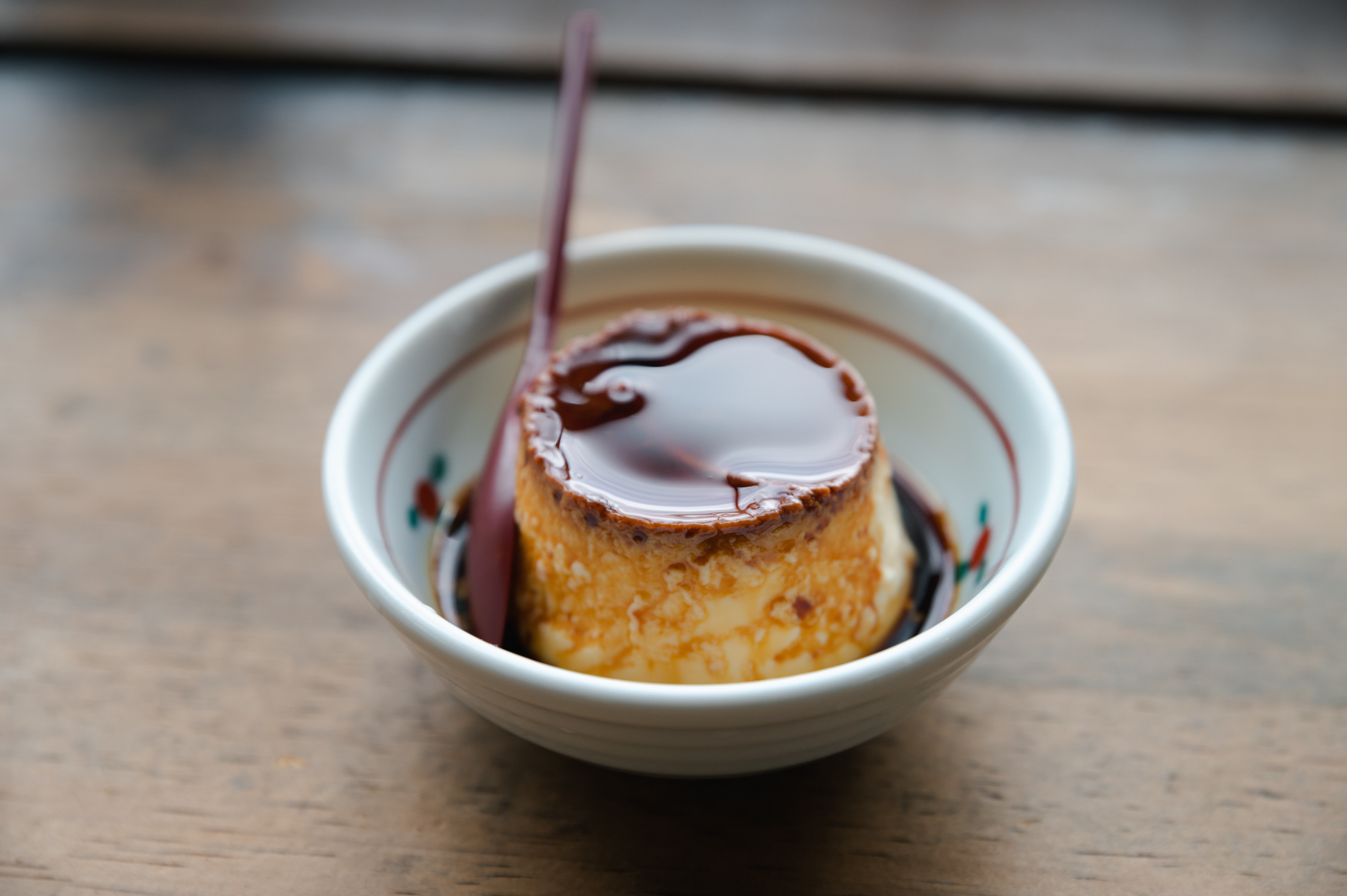
This exquisite pudding is handmade one by one by craftsmen using a method that has remained unchanged since 1988 (Showa 63), and finished with "hell steaming". The rich, smooth pudding, topped with bittersweet caramel, can be served on a plate and enjoyed on the spot. The shop is run by hot spring, a ryokan that has been running in Myoban Onsen since the Meiji era, and in addition to the signature pudding, they also sell sandwiches filled with plenty of hell steamed eggs. You'll find yourself wanting to try a variety of them.
- Okamotoya Shop
-
 https://jigoku-prin.com/
https://jigoku-prin.com/ Beppu City Myoban 3 Group MAP
Beppu City Myoban 3 Group MAP
 8:30~18:30(L.O.17:30)
8:30~18:30(L.O.17:30) Open daily
Open daily 0977-66-6115
0977-66-6115 free
free
◆ "Gokuraku Manju" from "Umi Jigoku"
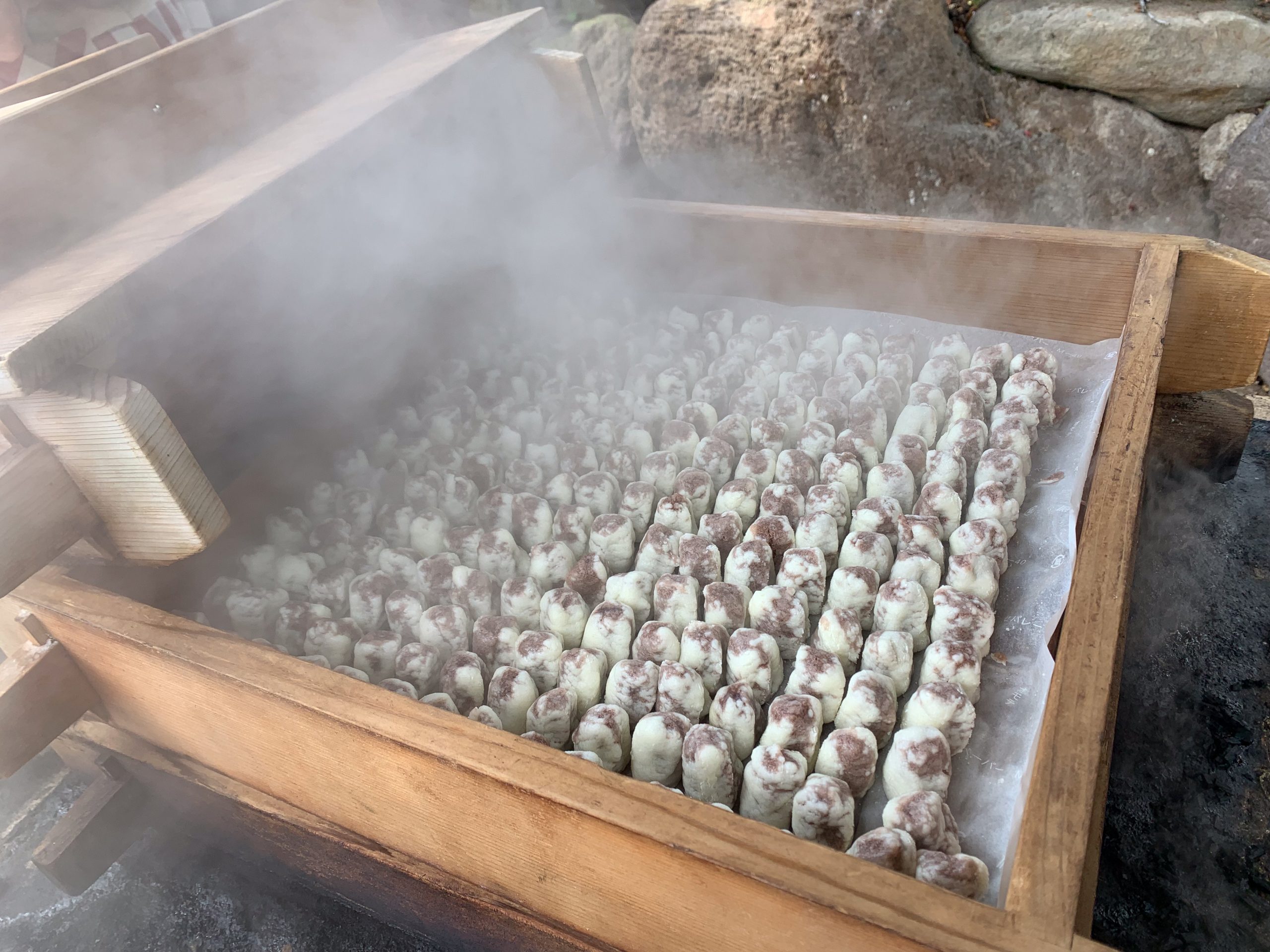
Among the many "Hells" in Beppu, this spot is especially popular for its cobalt blue spring water. hot spring is acidic and contains a lot of iron sulfate, with a temperature of about 98°C. The manju are steamed in a Jigoku pot that uses the high-temperature steam and are made of lightly sweetened smooth bean paste wrapped in a thin skin. They are bite-sized, about the size of your thumb, and have a fun, round appearance. They are a fun snack that you can pop into your mouth and finish off in no time. The eggs boiled directly in Umi Jigoku are also popular.
- Sea Hell
-
 http://www.umijigoku.co.jp/index.php
http://www.umijigoku.co.jp/index.php 559-1 Kannawa, Beppu City MAP
559-1 Kannawa, Beppu City MAP
 8:00~17:00
8:00~17:00 Open daily
Open daily 450 yen Elementary and junior high school students 200 yen
450 yen Elementary and junior high school students 200 yen 0977-66-0121
0977-66-0121 free
free
◆ "Hyotan hot spring"'s "Hell Steamed Eggs"
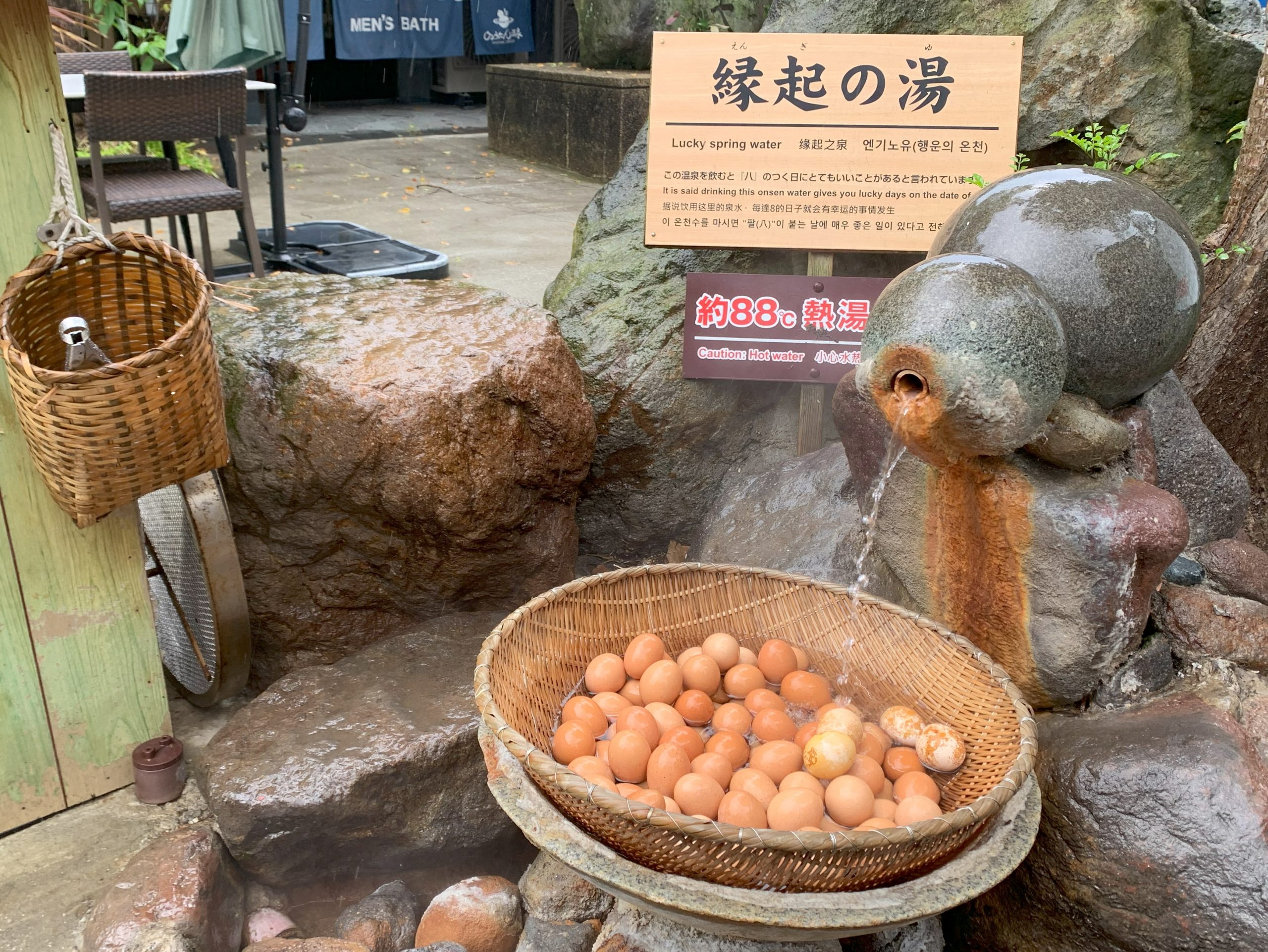
Located in the Kannawa area, you can enjoy a wide variety of hot spring facilities hot spring for a day trip. The "Jigoku Steamed Eggs" you are looking for are located in the rest area in the courtyard; eggs steamed by steam from the nearly 100 degree source are placed in a large colander and heated by hot spring flowing from the gourd-shaped hot water outlet, so they are always hot and fluffy. The system of purchasing eggs by putting money in a basket on the side is also retro in style. If you stop by only to buy eggs, tell the receptionist and you will be taken to the courtyard. In the courtyard, you can drink spring water and inhale the steam hot spring or Experience.
- Gourd hot spring
-
 https://www.hyotan-onsen.com/index.html
https://www.hyotan-onsen.com/index.html 159-2 Kannawa, Beppu City MAP
159-2 Kannawa, Beppu City MAP
 9:00 to 1:00 the next morning
9:00 to 1:00 the next morning Open everyday *There are temporary closures for Property maintenance several times a year
Open everyday *There are temporary closures for Property maintenance several times a year 0977-66-0527
0977-66-0527 free
free
A stay at Hoshino Resorts KAI Beppu where you can experience rich hot hot spring and local culture
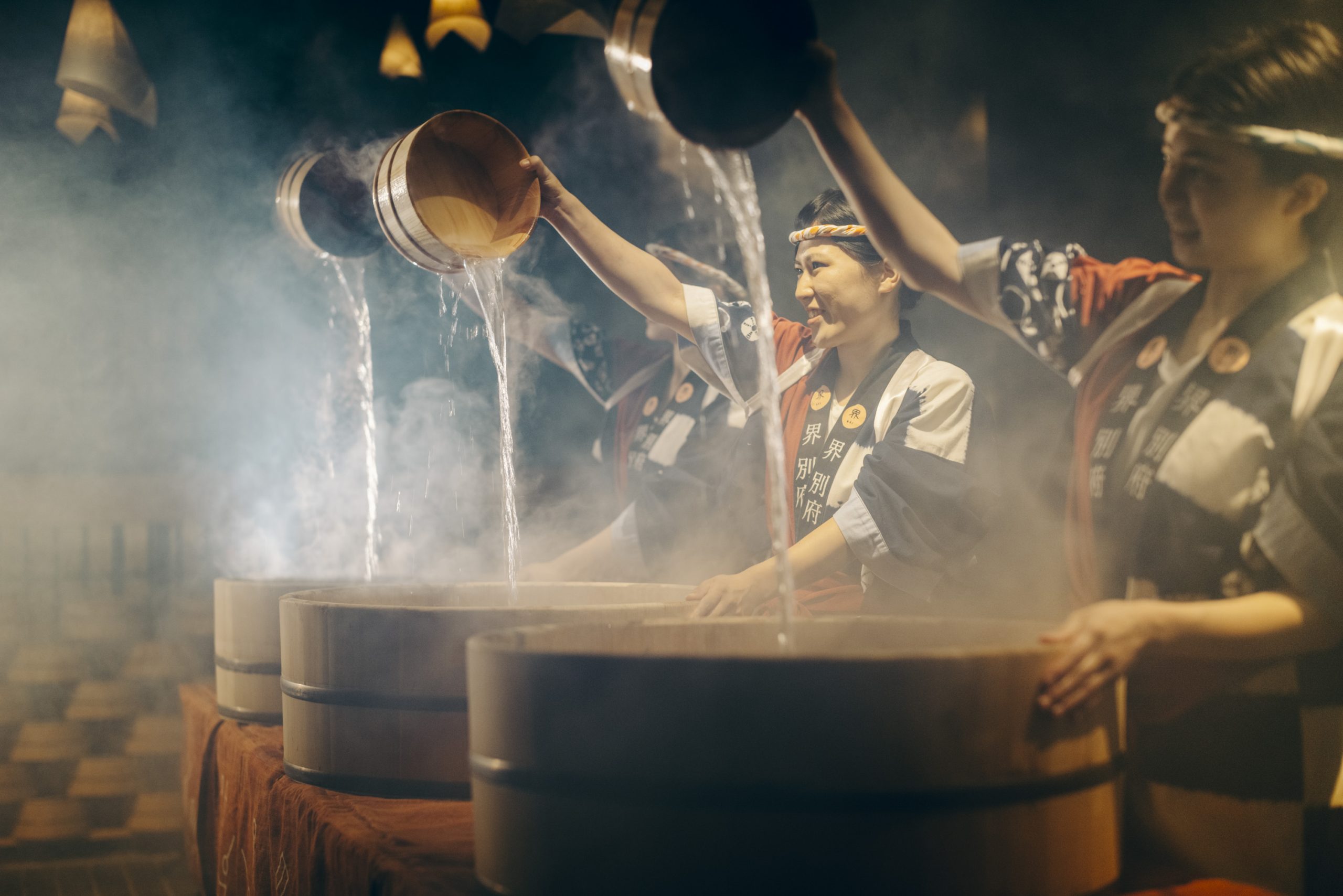
Located near the center of Beppu hot spring, this hot Hot spring ryokan is perfectly located to enjoy both the hustle and bustle of the town and the rich scenery of the mountains and sea. Even inside the inn, you will encounter a lively atmosphere that evokes the image of a hot hot spring town. The views from Guest room and foot baths that show dramatic expressions both day and night, the elaborate design that is characteristic of Beppu, the delicious dinner and breakfast, and hot spring that invite you to exceptional comfort. Here you can fully experience the charm of a hot hot spring resort worthy of being called "the best in Japan."






